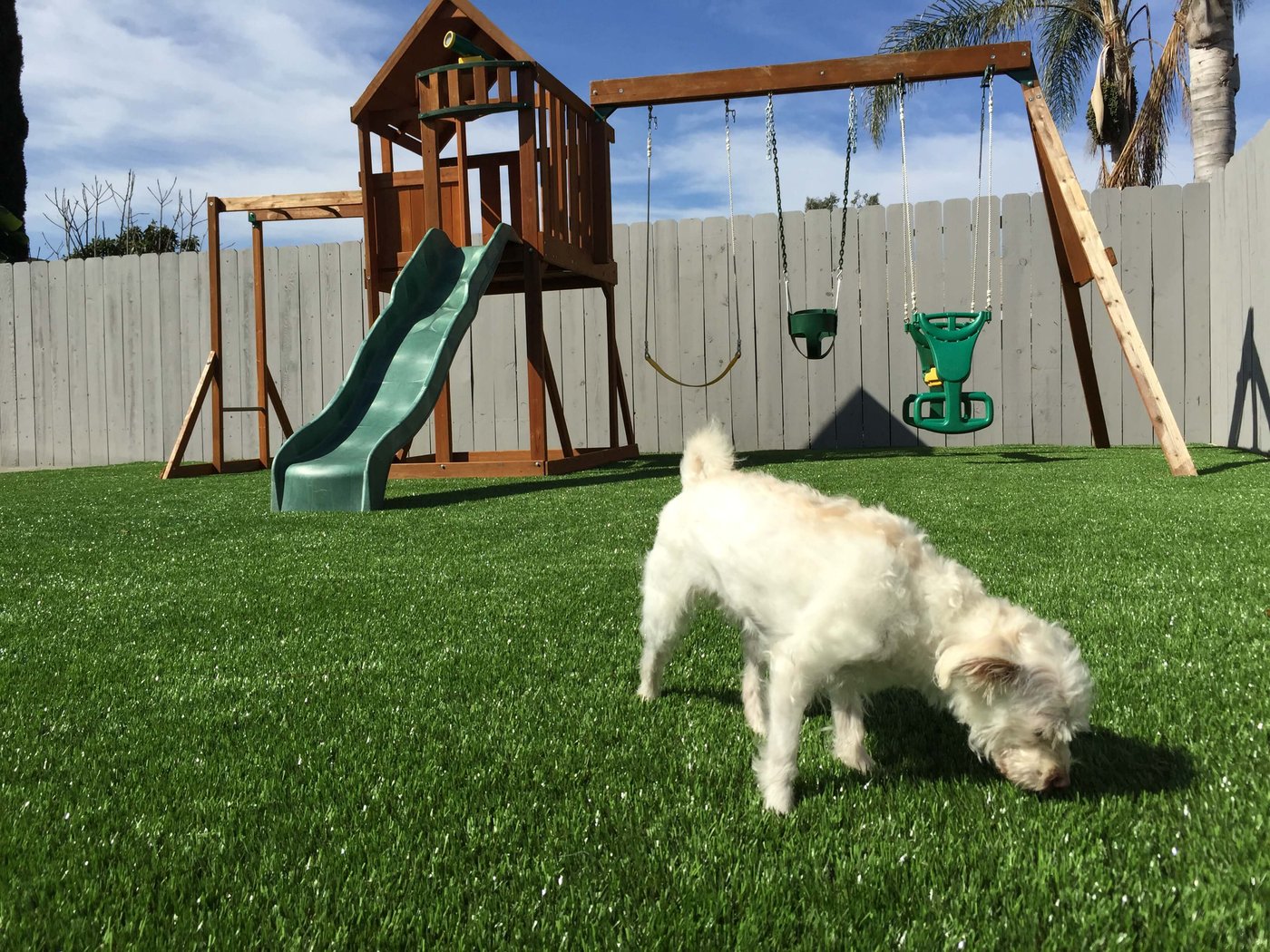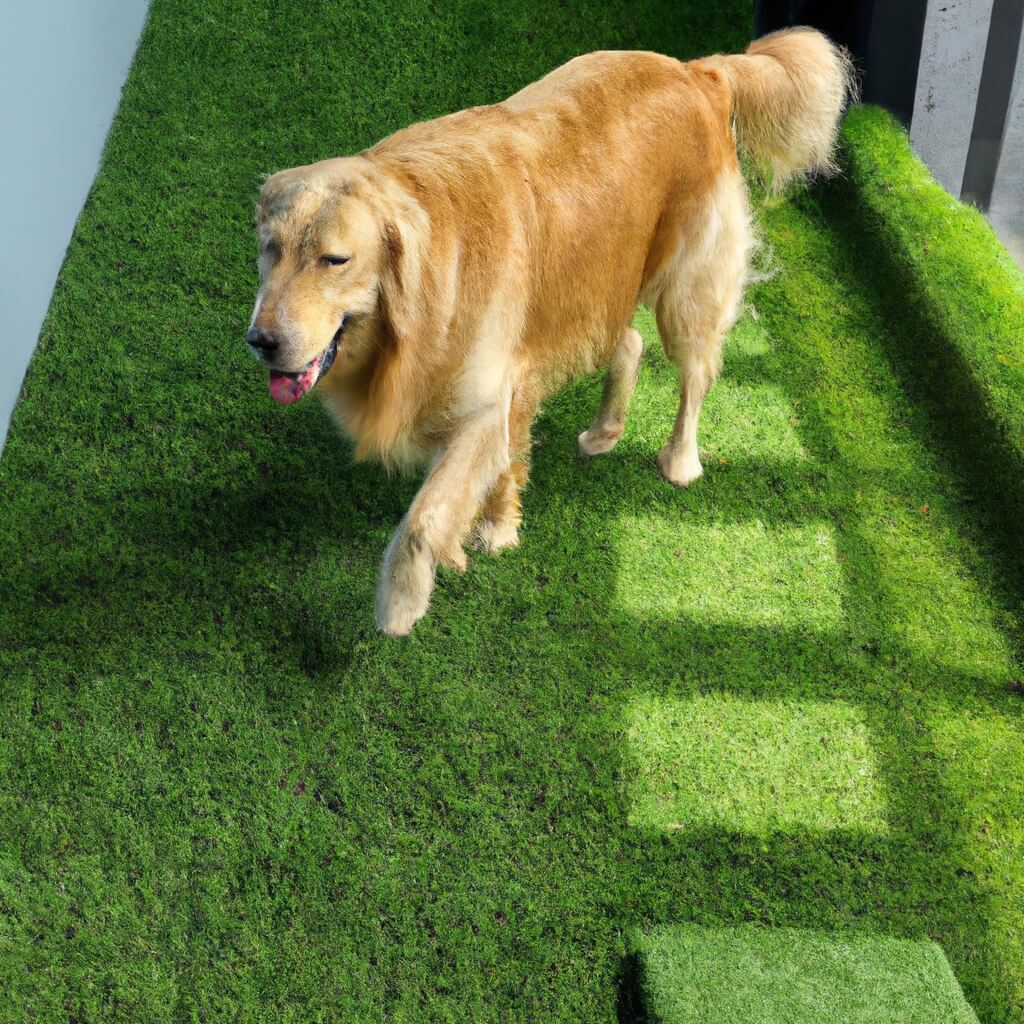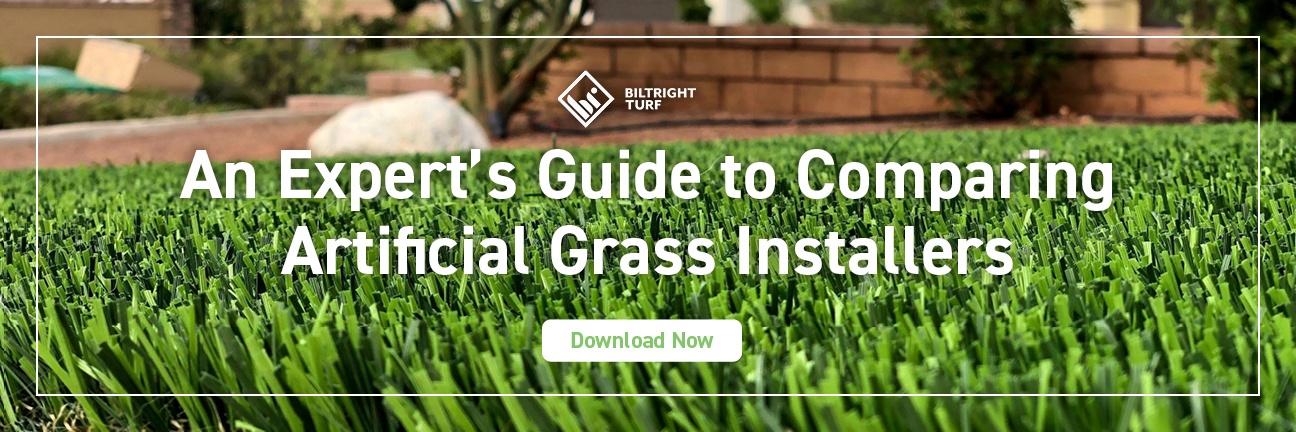Is Artificial Grass Too Hot for Dog Paws?
Jun 01, 2023 | Artificial Grass for Pets

As a pet owner, you want what is best for your pup. You feed him healthy dog food, take him to the vet, and give him plenty of exercise. You also make sure your home, inside and out, is safe for your pup.
If you are considering artificial turf for your outdoor areas, you have probably wondered whether it can get too hot for your furry friend. Is pet-friendly turf too hot in the summer?
It is true that artificial grass can get hot on sunny days, but proper preparation and selection of the right turf can mitigate much of the issue. That means your pup can happily romp around in your artificial grass whenever he likes.
A Heated Comparison: Cement vs. Artificial Grass vs. Natural Grass
How hot is your backyard surface? On very hot days, you might be surprised how the heat affects the things your dog's feet might come in contact with. According to the UGA climate site, if the ambient air temperature is 95 °F, cement can reach the dangerously hot temperature of 125 °F. Red brick and blacktop can get even hotter. You have heard the phrase, "hot enough to fry an egg." It could also be hot enough to burn the sensitive skin on your pet's paws.
You might think natural grass would be considerably cooler, but even in the shade, natural grass can reach 91 °F. In the sun, natural grass can get to 105 °F, although it is rare for natural grass to rise above 100 °F.
Artificial grass is not as cool as natural grass, but fortunately, it does not absorb heat as much as cement, asphalt, or red brick.
When in the shade, artificial turf will be within a degree or two of the ambient air temperature. It can become 30-40% warmer in direct sunlight.

Why does artificial grass get hotter than natural grass?
Artificial grass heats up due to the ambient air temperature and solar. Fake grass absorbs infrared rays, which then transfers into heat. Why does it do that? It's because artificial grass is made from synthetic materials like polyethylene, polypropylene, or nylon. These materials all absorb and retain heat more effectively than natural grass, which is composed of organic material and water.
When you are looking for synthetic turf, it's good to know how the sun in your backyard may affect the temperature of the different materials. Then, when you have carefully chosen a pet-friendly turf that will be ideal for your front or backyard, find a professional who knows how to properly install pet turf.
What features should you look for in artificial grass for dogs?
Dog owners should look for the following features when choosing artificial grass for their outdoor areas:
-
Light fiber color. Lighter colors will reflect more infrared light rather than absorb it. This means less heat is trapped inside the fibers.
-
Proper blade shape. W blades disperse heat to keep synthetic grass up to 15 degrees cooler on warm days. The accordion design on Z blades increases resistance and also disperses heat.
-
High yarn quality. A high carbon count in the yarn prevents matting, flattening, and makes it more temperature resistant. For example, DuraBlade is a soft, natural-looking yarn with a longer carbon chain than other yarns. It is perfect for sunny climates because it protects against UV radiation and resists fading.
-
Low face weight. Face weight is the weight in ounces of the fibers and stitching per square yard of turf. A lighter face weight is preferable because your turf will absorb more heat the denser it is.
-
Low pile height. Pile height is measured from the backing of the artificial turf to the end of the grass fibers. We recommend that the pile height be no higher than 1.5 in. Low pile heights are ideal for dogs because they help release heat and resist damage better than taller artificial grass.
-
UV-resistance. UV-resistant polyethylene reflects direct sunlight, which means the heat will dissipate instead of becoming absorbed into the material. An added benefit of UV-resistant turf is that it will keep its color longer.
Your dog's paws will be much more comfortable on artificial grass that is specially chosen for its heat-resistant qualities. Even with the right materials and features, steamy hot days will still heat up your synthetic grass. That is when you should consider other ways to cool down the yard.

How do you cool synthetic grass for dogs?
To reduce temperatures in your artificial grass, use pet-friendly, 100% organic, cooling Zeolite-based infill material like ZeoFill or Biltright Turf's Cool-Pet Blend. These infills can reduce heat by up to 19 °F.
Brushing your turf will also help cool it down. If the blades are flattened, they will transfer heat faster. Brushing the grass separates the fibers, which helps to release heat.
When kids are overheated, they run through the sprinkler to cool down. Your lawn will also cool down with water. Get out the hose and rinse your synthetic grass before letting your pets outside. Or, let your pup run through the hose as you rinse off your lawn. Installing a proper drainage system will ensure the water doesn't create puddles.
Increased air circulation is another good way to cool down your synthetic grass. How can you achieve better air circulation if it's not windy outside? Use a leaf blower!
Finally, we recommend providing a shaded area for your furry friend to relax in. If you don't have any trees or shrubs providing natural shade, then put up an umbrella or drape a sheet over the backs of two lawn chairs. They will appreciate a cooler, shaded spot and a pet turf system that is considerate of their sensitive paws.


